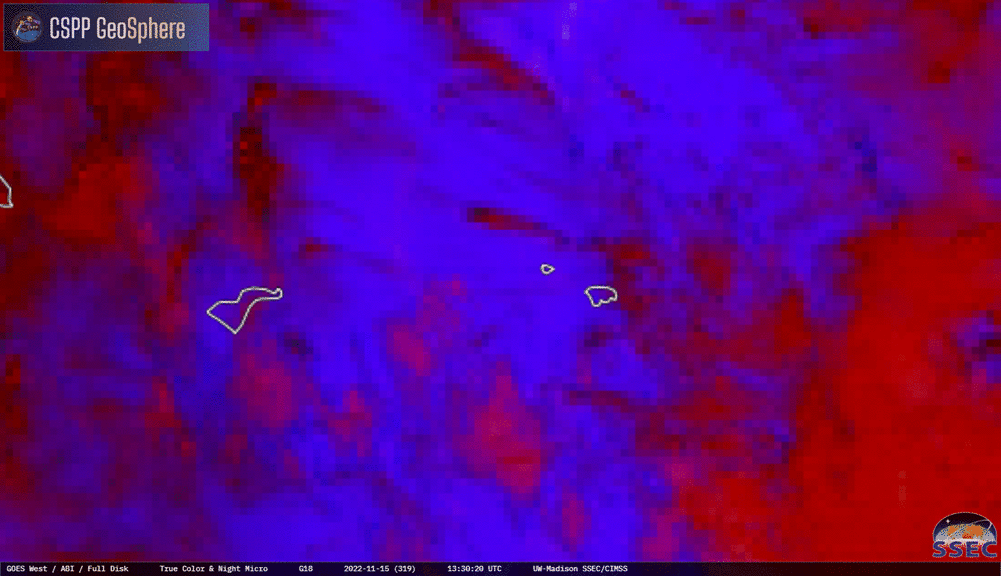Convective initiation in the Nighttime Microphysics RGB
The animation above shows the Nighttime Microphysics RGB (saved from the CSPP Geosphere site) over the islands of American Samoa. (An animated gif is available here). The annotated animation below highlights several features that are typical of convective development detection at night. Low clouds become apparent shortly before 1450 UTC (when they are circled); subsequent color changes in those low clouds (in this case, a reddening that then detaches from the cloud) are most likely orphaned anvils (highlighted with arrows in the 1500-1530 UTC imagery — but the orphaned anvil can be tracked at later times, as it moves farther to the south) whose appearance frequently precedes successful convection; further reddening of the low clouds, as highlighted by arrows from 1610 to 1630 UTC, shows a transition of the low clouds (made up of water droplets) to higher clouds that are glaciating. At the end of the animation, note that active convection is near the Manu’a Islands.

Careful inspection of the Night Microphysics RGB can help you anticipate where convection might be developing at night.

